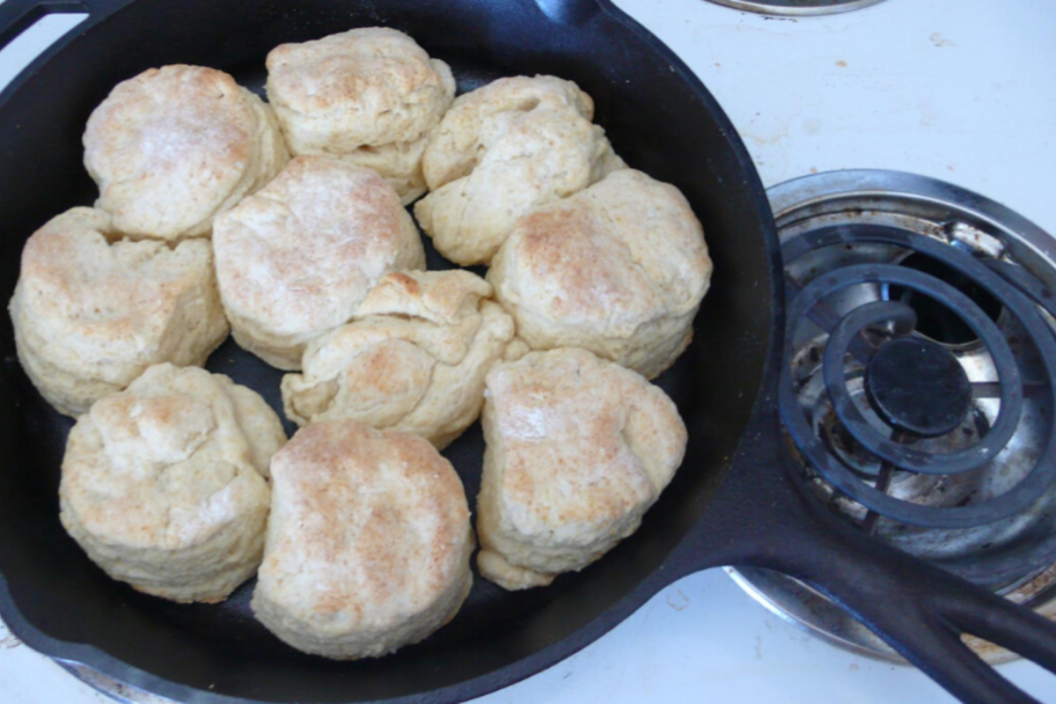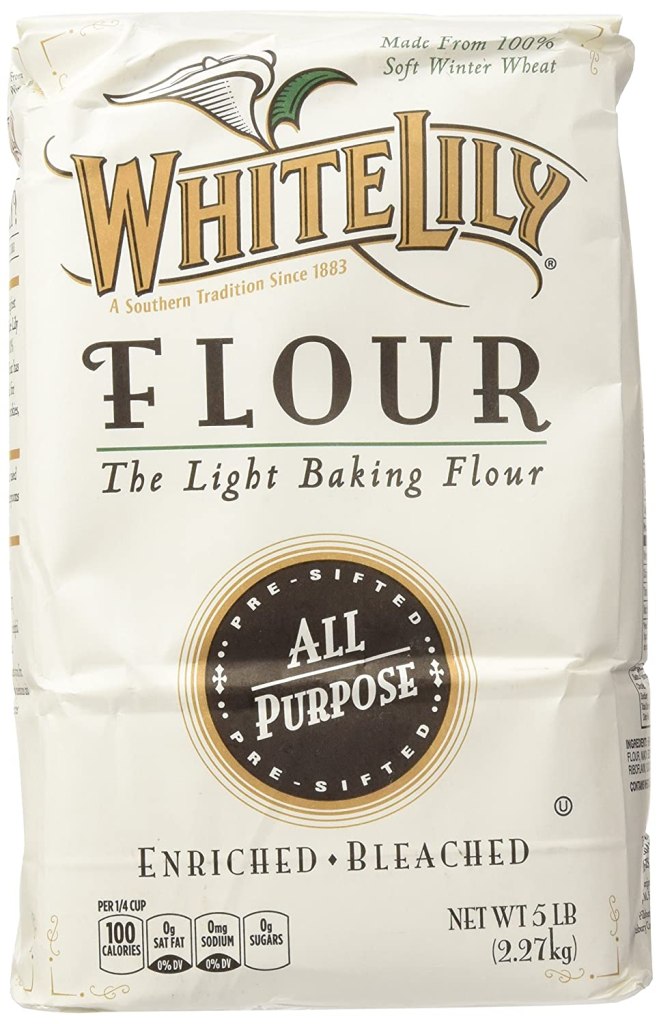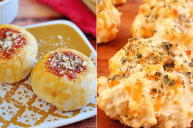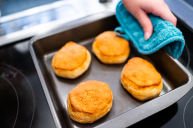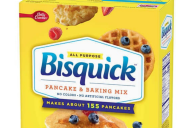Homemade biscuits are, hands-down, the best kind of bread. And while they might sound complicated to make, biscuits are really easy to make if you remember a few things, namely, keep the butter cold, don't over mix, and use the right flour. But there are ways to make biscuits go from mixing bowl to table even faster.
Videos by Wide Open Country
I'm a huge fan of drop biscuits because they cut a few minutes off the biscuit-making process. Fannie Farmer called them "emergency biscuits" which is a great name because sometimes you just gotta have biscuits. Instead of kneading and folding the biscuit dough, you use a bit more liquid and drop the biscuit batter onto the baking sheet by the spoonful.
Because drop biscuit dough is worked less (since you don't knead or fold it), they bake up tender instead of flaky, and they're great for biscuit sandwiches, sopping up gravy (and butter and jam). Drop biscuits are also commonly used for cobbler and shortcake toppings. Pro tip: Drop biscuits are freeform, but if you want to give them a bit more shape, use a muffin or mini muffin tin.
Stovetop biscuits, also known as skillet biscuits, take the easy and fast a step farther by skipping the oven altogether and using a cast-iron skillet to cook the delicious buttery biscuits on the stove. Stovetop biscuits are great if you just have to have biscuits in the middle of the summer but can't stand to turn on your oven. Or if the power goes out and all you have to cook with is a gas stove or the grill on your patio. And stovetop biscuits are brilliant for camping - all you need is your trusty cast-iron skillet and a good campfire.
How to Make Stovetop Biscuits
The process couldn't be easier. Start with a basic drop biscuit recipe, which is one and a half cups of flour (without taking sides on the flour debate, we'll note that all-purpose flour or a softer baking flour like White Lily works well for drop biscuits), two teaspoons of baking powder and a teaspoon salt (kosher salt, if you have it). Mix all the dry ingredients together in a large bowl.
Cut four ounces (usually one stick) of unsalted butter into the dry ingredients, which just means to rub the butter and flour mixture together until you get a coarse mixture. I think it's easiest to do by hand (and it's fun because it's a little bit messy), but you can use forks or even a food processor, too.
Add 3/4 cup of whole milk. Mix the liquid in just until a sticky dough forms (don't do this step in a food processor).
You can use your favorite buttermilk biscuit recipe, too. Or, in a pinch, you can even use store-bought dough.
There are two ways to cook biscuits on the stovetop. The first is to treat them like pancakes and fry them. First, heat your cast iron skillet or frying pan over low heat and add butter or lard to the pan. Then drop the dough by spoonfuls into the hot skillet and flatten it just a little. You can make these stovetop biscuits large or small; the number of biscuits you get depends on how big your spoonfuls are. You're going to turn the stovetop biscuits halfway through, so leave some room around each one. Cook until each side is golden brown, which takes 8-10 minutes (total time should be around 20 minutes).
The other way is to make "cowboy biscuits." This method is used for trail rides and camping, where you're cooking over an open fire, but it works on your home stovetop, too. Preheat a dutch oven, again with butter or lard, over medium heat. Drop the biscuit dough into the dutch oven; you want the biscuits to crowd up against each other. Cover the dutch oven and let the biscuits bake for 20 minutes. Don't take the lid off during that time, since that lowers the temperature in the dutch oven.
Once you've made these easy biscuits, you might try adding your own twist to them. Maybe throw in some shredded cheese or herbs, or add a little bit of sugar and use them in a dessert. Serve your stovetop biscuits with any meal, though I recommend saving one or two for a midnight snack with that last bit of honey butter or a slice of ham and cheese.
